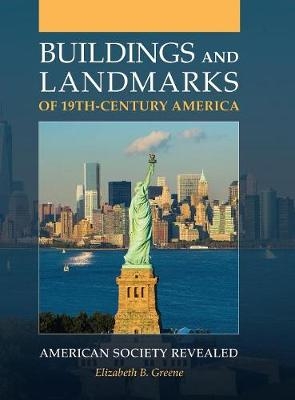
Buildings and Landmarks of 19th-Century America
Greenwood Press (Verlag)
978-1-4408-3572-8 (ISBN)
America has always been a nation of thinkers, believers, creators, and builders. Evidence of this is plentiful among the landmarks constructed in the 19th century. Buildings and Landmarks of 19th-Century America: American Society Revealed examines many examples that include homes, office buildings, recreational spaces, military sites, religious buildings, and other landmarks in a variety of geographical locations, discussing the background, architecture, and cultural significance of each. Each engaging, accessible entry not only provides readers detailed information about how the landmark relates to what was going on in American society at the time of its construction but also sparks the reader's interest to research the subject further.
As examples, consider that a rural cemetery built in Massachusetts in the early 19th century was the prime influence on public park design and led to the construction of New York's Central Park and many other public parks since. The millionaire industrialist and philanthropist Andrew Carnegie built many of the first free public libraries in the country, which led to the development of municipal public library systems. The huge success of 19th-century world's fairs, like the 1876 Centennial Exhibition and the 1893 World's Columbian Exhibition, had lasting effects on society through the many new products that they introduced to the public. Throughout the book, landmarks are analyzed to elucidate their influence on many aspects of 19th-century society, including the treatment of the mentally ill, impact of religious revivals, growth of leisure and vacation time, and housing for the poor and the western homesteader, among many others.
In the "How to Evaluate Buildings and Structures" section, readers are prompted to consider questions such as "What specific purposes did the building or structure have?" "When was it constructed, and what were the circumstances?" and "What was the need it addressed?" Students will learn about the period while also developing the skills of observation and assessment needed to analyze these landmarks and draw meaningful conclusions from them about their context and significance. The discussion of each landmark serves to help readers with these elements of critical thinking, assessment, and analysis.
Elizabeth B. Greene is an interior designer at the College of Staten Island.
Preface
Acknowledgments
Introduction
How to Evaluate Buildings and Structures
Chronology
CIVIC ARCHITECTURE
United States Capitol
White House
University of Virginia Rotunda
Erie Canal
Snug Harbor "Temple Row"
Smithsonian Institution Building ("The Castle")
Central Park
Richardson Olmsted Complex (Former Buffalo State Hospital)
Memorial Hall, Centennial Exhibition
Iolani Palace
Easton Railroad Station
Brooklyn Bridge
Statue of Liberty
Carnegie Library
Hull House
World's Columbian Exposition, Palace of Fine Arts Building (Currently Museum of Science and Industry)
COMMERCIAL ARCHITECTURE
Boott Mill
Ford's Theatre
Madison Square Garden
Wainwright Building
Marshall Field Department Store
Bradbury Building
DOMESTIC ARCHITECTURE
Evergreen Plantation
Slave Quarters, Evergreen Plantation
Lyndhurst
Kit Carson House
Walden Pond Cabin
Longwood Octagon House
97 Orchard Street (Currently the Lower East Side Tenement Museum)
Mark Twain House
Emlen Physick House
Home and Tower Buildings
Pullman, Illinois, Clock Tower and Administration Building
Dakota Apartments
Glenmont, Thomas Edison Estate
Frank Reed Three Decker House
The Breakers
Dowse Sod House
FORTIFICATIONS
Fort Clatsop
Fort Sumter
RELIGIOUS AND FUNERARY ARCHITECTURE
New Harmony
Round Stone Barn, Hancock Shaker Village
Mount Auburn Cemetery
Mormon Tabernacle
Trinity Church
Glossary
Select Bibliography
Index
| Erscheinungsdatum | 25.05.2017 |
|---|---|
| Zusatzinfo | 45 bw illus |
| Sprache | englisch |
| Maße | 216 x 279 mm |
| Gewicht | 1247 g |
| Themenwelt | Geschichte ► Allgemeine Geschichte ► Neuzeit (bis 1918) |
| Geisteswissenschaften ► Geschichte ► Regional- / Ländergeschichte | |
| Geschichte ► Teilgebiete der Geschichte ► Kulturgeschichte | |
| Technik ► Architektur | |
| ISBN-10 | 1-4408-3572-1 / 1440835721 |
| ISBN-13 | 978-1-4408-3572-8 / 9781440835728 |
| Zustand | Neuware |
| Informationen gemäß Produktsicherheitsverordnung (GPSR) | |
| Haben Sie eine Frage zum Produkt? |
aus dem Bereich


